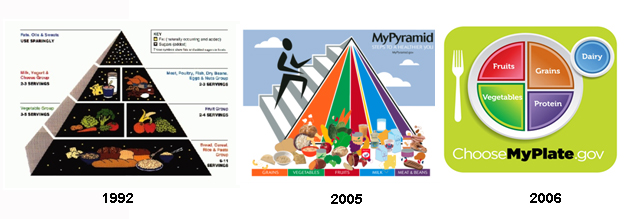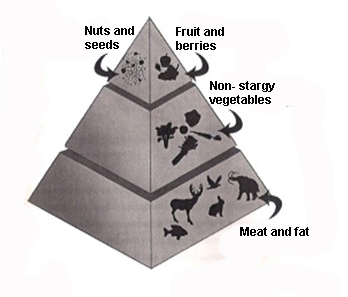I’m sure that if you stumbled onto the heal-the-cause website and you are reading my blog, you are interested in health and being healthy. First and foremost we want to give our bodies the right fuel, but what is that? The internet is such a wonderful source of information, but it can also be an equal source of confusion. For instance, there will be studies indicating that eggs are a healthy source of protein, but those are followed by studies that show eggs are high in cholesterol, which is supposedly unhealthy. Some nutritional guides and dieticians base their nutritional information on scientific studies and book knowledge. If you are not prompted to eat according to your blood type then you should eat according to your metabolic type. We have made nutrition complex when really, it should be as natural as breathing. Unfortunately, and it sounds insane, we have forgotten how to eat. This is why we follow what the professionals prescribe, but our poor state of health indicates that the professionals may have it all wrong.
Nutritional guidelines over the past 20 years
The food pyramid originated in Sweden in 1972 amid escalating food prices, so it was financially motivated. The idea behind it was to guide people to consume “basic foods” that were both cheap and nutritious, and “supplemental foods” that added nutrition missing from the basic foods. The U.S. Department of Agriculture (USDA) introduced the first food pyramid in 1992, which had grains as the largest bottom block of the pyramid, and it advised us to eat 6-11 servings of bread, cereal, rice, and pasta. In 2005 an updated version called My Pyramid, showed little difference and it too recommended that grains should make up the bulk of our diet. Now in 2011, almost 20 years later, the precursory food pyramids have been replaced by My Plate.
The new Food Plate recommends an increase in vegetables and no longer maintains that grains should make up the majority of our diet. Although this is a step in the right direction, the new food plate includes no fat. Except for the small amount of dairy, which should ideally be fat-free or low-fat, there is no mention of dietary fats. So, in the last 20 years, the dietary guidelines let us to believe that a grain/carbohydrate-based diet is healthy; that proteins are the least important macromolecules, and that fats are not essential as part of a healthy eating plan. Now let’s look at what our ancestors ate when nutritional guidelines were non-existent.
The remarkable health of our ancestors
It does not matter what ancient nation you investigate, if they were hunter-gatherers they were healthy. Weston Price, an early explorer noted after investigating the skeletal remains of the Native American Indians of Vancouver that there was the virtual absence of tooth decay, arthritis, and any other kind of bone deformity. TB was nonexistent among Indians who ate as their ancestors had done, and the women gave birth with ease. The ancient Indians were tall, well-formed, and strong, with enough energy to track and hunt down an animal for days. The same can be said about the native Aborigines of Australia as well as the ancient Alaskan Eskimos. So, in general, the scientific evidence available about hunter-gatherers who follow their traditional ways shows that globally they enjoyed good health with remarkably low rates of degenerative diseases. So what gave these native nations such supreme health? The following food pyramid should answer that question.
Unfortunately after colonization, the modern diet of many Aborigines and Native American Indians strongly mirrors European influences. Accessibility of low-cost processed foods combined with a lack of educational resources and fewer opportunities to forage has caused many to adopt a diet high in calories, saturated fats, sodium, flour, and concentrated sweets; low in fiber, vitamins, and minerals. It should come as no surprise that these once healthy nations now suffer high rates of heart disease, obesity, diabetes, and other chronic illnesses and that this is principally a result of dietary changes and decreased physical activity.
Why did we “fix” something that was not broken?
In my opinion there really is just one answer…money. The food industry spends billions of dollars to sabotage your health. Agricultural subsidy programs also favor grains over healthier food groups like vegetables and fruit, effectively making unhealthy and processed food cheaper. In addition, market distortions due to subsidies have led to an increase in corn-fed cattle rather than grass-fed, which require more antibiotics and their beef has a higher fat content.
The food industry spends an enormous amount of money on advertising to convince and brainwash people to choose highly processed, denatured convenience foods that will accelerate their path toward disease. They make you believe that 2-minute noodles and sugar-laced cereals are not only quick and easy to make but are very healthy for your child. The drug and healthcare industry then picks up where they left off, pushing drugs to control the symptoms created by a junk food diet…Isn’t it just a symbiotic match made in hell?
What is the way forward?
It will require a complete change of mindset about food. Avoiding processed, convenience food is not always easy, since it is flavor enhanced and therefore tastes great, plus, it suits a fast lifestyle. If we however want health for ourselves and our families, we will have to get back into the kitchen and prepare food from scratch, using fresh, healthy, and whole ingredients.
If you want to optimize your health, you simply must return to the basics of healthy food choices. And, as more and more people begin to grasp this concept and demand healthy, unprocessed foods, more must be produced, one way or another. Remember, any amount of time and money you save today by stopping at a fast food restaurant, you’re bound to repay later in the form of medical bills and poor quality of life.
Reference
Weston A. Price, DDS, Nutrition and Physical Degeneration, Price-Pottenger Nutrition Foundation, (619) 574-7763, pages 73-102



Recent Comments